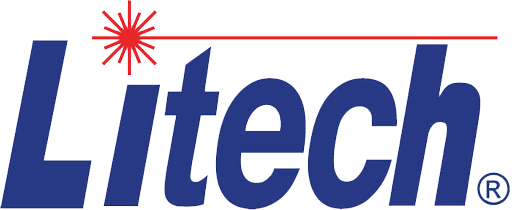What’s the Difference Between CAT 5, CAT 6, CAT 7 & CAT 8?
Choosing the right Ethernet cable can feel overwhelming, especially with terms like CAT 5, CAT 6, CAT 7, and CAT 8 thrown around. What do these categories mean? How do they affect internet speed and performance?
Whether you’re a tech enthusiast upgrading your home network, a small business owner improving operations, or an IT professional managing complex systems, understanding Ethernet cables is essential. This post breaks it all down, so you can confidently choose the best Ethernet cable for your needs.
The Most Popular Network Cables
Ethernet cables play a crucial role in ensuring reliable internet connectivity. Over the years, four key types of network cables have dominated the market, each offering specific features and benefits. Here’s a summary of the most popular options:
CAT 5 Ethernet Cable
- Maximum Speed: Up to 100 Mbps
- Supported Bandwidth: 100 MHz
- Best For:
- Basic home networks
- Web browsing and streaming (SD quality)
- Why It’s a Popular Option:
CAT 5 cables are affordable and simple, but they are now largely outdated. They are suitable for slow networks and low-bandwidth requirements, but modern users often aim for faster alternatives.
CAT 5e Ethernet Cable
- Maximum Speed: Up to 1 Gbps (Gigabit Ethernet)
- Supported Bandwidth: 100 MHz
- Best For:
- Basic gaming
- HD video streaming
- What Sets It Apart:
CAT 5e is an improved version of CAT 5. It reduces “crosstalk” (interference between cables), making it a better choice for small businesses and standard home networks without breaking the bank.
CAT 6 Ethernet Cable
- Maximum Speed: Up to 10 Gbps (at shorter distances, usually under 55 meters)
- Supported Bandwidth: 250 MHz
- Best For:
- Gaming enthusiasts
- High-definition video streaming
- Small office networks
- Key Features:
CAT 6 cables are more advanced than CAT 5e, with reduced interference and higher data speeds. They’re a top choice for users who want faster, more reliable internet speeds.
Also Read | Benefits of Cat 6 Ethernet Cable
CAT 6a Ethernet Cable
- Maximum Speed: 10 Gbps (even at 100 meters)
- Supported Bandwidth: 500 MHz
- When to Use It:
- High-performance office networks
- Video conferencing systems
- Cloud-based applications
- Why Upgrade:
CAT 6a doubles the bandwidth of CAT 6 and eliminates crosstalk entirely. It’s ideal for environments that demand consistency and speed.
Must Visit | Understanding Cat 6 Ethernet Cables
CAT 7 Ethernet Cable
- Maximum Speed: Up to 10 Gbps
- Supported Bandwidth: 600 MHz
- Best For:
- Advanced smart homes
- High-resolution video editing workflows
- Additional Benefits:
CAT 7 cables feature improved shielding, minimizing interference. They use GG45 connectors, which are backward compatible but more specialized.
CAT 8 Ethernet Cable
- Maximum Speed: Up to 40 Gbps
- Supported Bandwidth: 2000 MHz
- Best For:
- Data centers
- High-demand environments
- Future-Proofing:
CAT 8 cables meet the highest performance standards on the market. They’re designed for future technologies and handle extreme workloads seamlessly.
Internet Cables for the Most Demanding Applications
If you run a business or work in an industry with heavy data usage, your Ethernet cable can make or break your network’s efficiency.
Why Bandwidth Matters
Bandwidth determines how much data your cable can handle at once. For most users, CAT 6 or CAT 6a provides sufficient bandwidth for gaming, streaming, or working remotely.
Shielding vs. Unshielded Cables
- Shielded Twisted Pair (STP) cables reduce electromagnetic interference, ideal for noisy environments.
- Unshielded Twisted Pair (UTP) cables are more common for home and basic business use due to their lower cost.
Extreme Speed—Ethernet Cables for Data Centers
Data centers demand peak performance. CAT 8 cables are engineered to support the ultra-fast speeds required in such environments, where large-scale data transfer and minimal latency are non-negotiable.
Key Advantages of CAT 8 for Data Centers:
- 40 Gbps speed ensures smooth operation even under extreme demands.
- Advanced shielding prevents interference across massive cable bundles.
- 2000 MHz bandwidth supports seamless communication between servers.
Which Ethernet Cable for What?
Here’s a quick guide to help you select the right Ethernet cable, tailored to your needs:
| Requirement | Recommended Cable |
|---|---|
| Budget-friendly home setup | CAT 5e or CAT 6 |
| HD streaming and gaming | CAT 6 |
| Small office with high traffic | CAT 6a |
| Advanced home automation | CAT 7 |
| Enterprise-grade performance | CAT 8 |
Pro Tip for Businesses in Pakistan
Searching for networking cables like CAT6 UTP PVC or monitoring the UTP CAT6 cable price per meter in Pakistan? Compare local prices efficiently and plan your budget for seamless upgrades.
How to Choose Your Ethernet Cable Wisely
- Prioritize Speed and Bandwidth:
If future-proofing is your goal, err on the side of higher speed (CAT 6 or CAT 6a as a baseline).
- Environment:
Consider shielding when installing cables in noisy areas or data centers.
- Budget:
For personal setups, CAT 5e or CAT 6 provides a cost-effective option with decent performance.
Refresh Your Network Today
The right Ethernet cable can significantly elevate your network’s performance, ensuring speed, reliability, and efficiency. Whether you’re setting up a home connection, managing a small business, or revamping a corporate server, understanding what each Ethernet category offers will help you make an informed decision.
Need more specifics? Explore networking essentials, from Cat 6 cable price per meter to UTP options tailored for businesses, and find what suits you best.
Related Articles:
4 Core Fiber Cable Price in Pakistan
